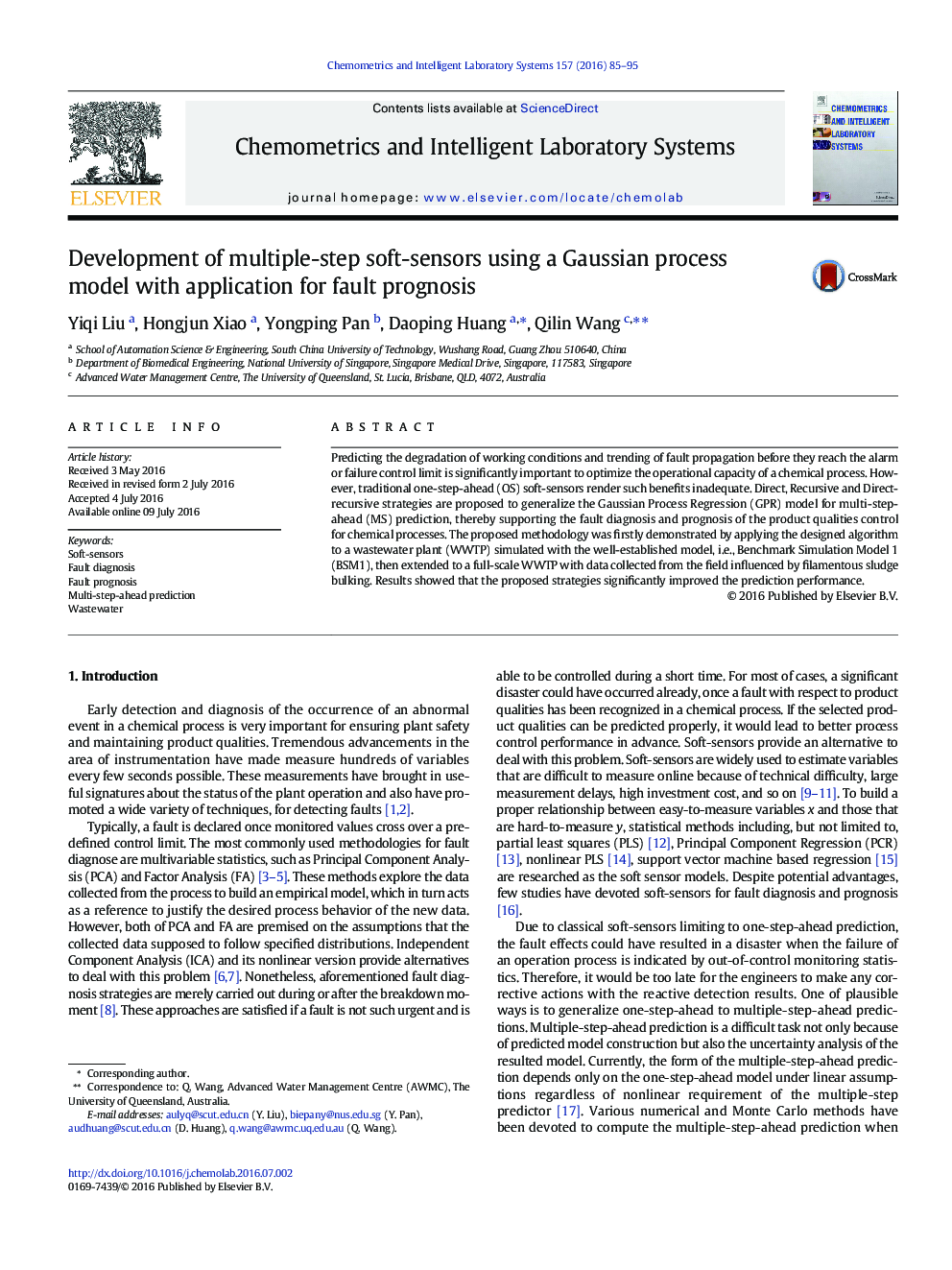| Article ID | Journal | Published Year | Pages | File Type |
|---|---|---|---|---|
| 1180132 | Chemometrics and Intelligent Laboratory Systems | 2016 | 11 Pages |
•A GPR is used for multi-step prediction depending on the data trend.•Direct, Recursive and Direct-recursive methods are employed to generalize GPR model.•The uncertainty information generated from GPR facilitates fault pre-caution.•Multi-step prediction can support fault diagnosis and prognosis efficiently.
Predicting the degradation of working conditions and trending of fault propagation before they reach the alarm or failure control limit is significantly important to optimize the operational capacity of a chemical process. However, traditional one-step-ahead (OS) soft-sensors render such benefits inadequate. Direct, Recursive and Direct-recursive strategies are proposed to generalize the Gaussian Process Regression (GPR) model for multi-step-ahead (MS) prediction, thereby supporting the fault diagnosis and prognosis of the product qualities control for chemical processes. The proposed methodology was firstly demonstrated by applying the designed algorithm to a wastewater plant (WWTP) simulated with the well-established model, i.e., Benchmark Simulation Model 1 (BSM1), then extended to a full-scale WWTP with data collected from the field influenced by filamentous sludge bulking. Results showed that the proposed strategies significantly improved the prediction performance.
